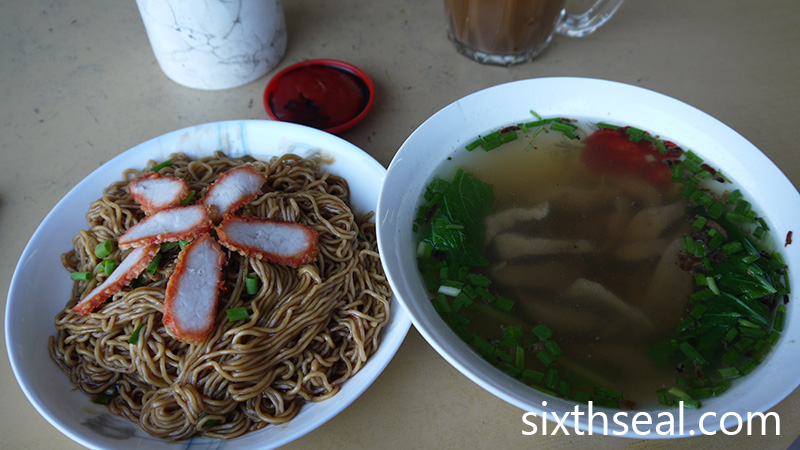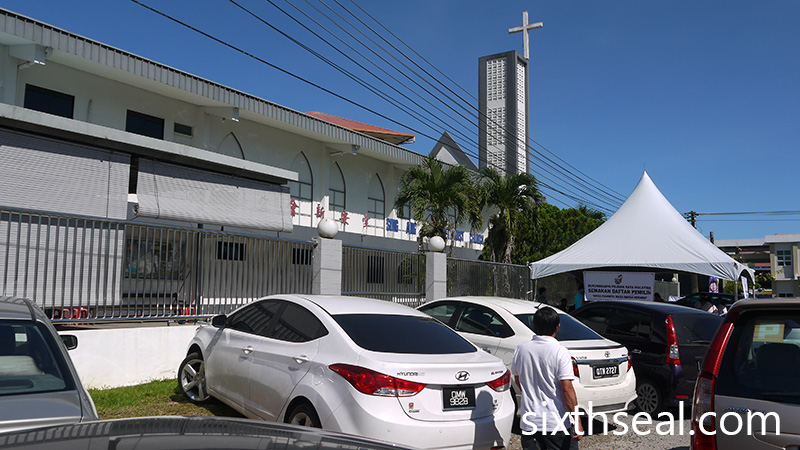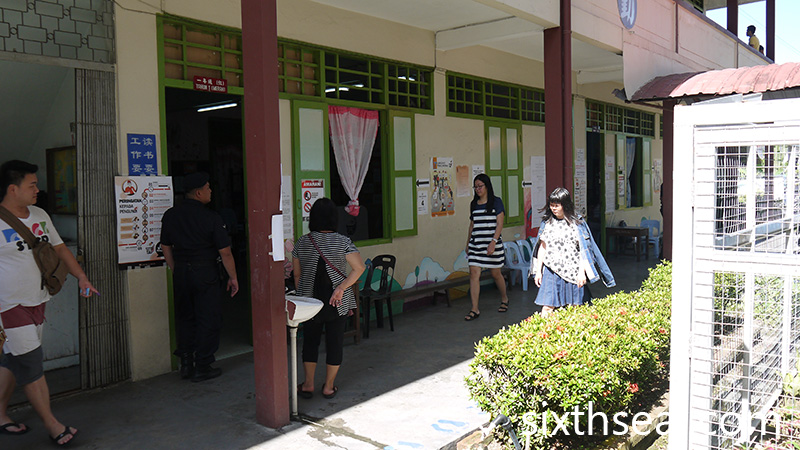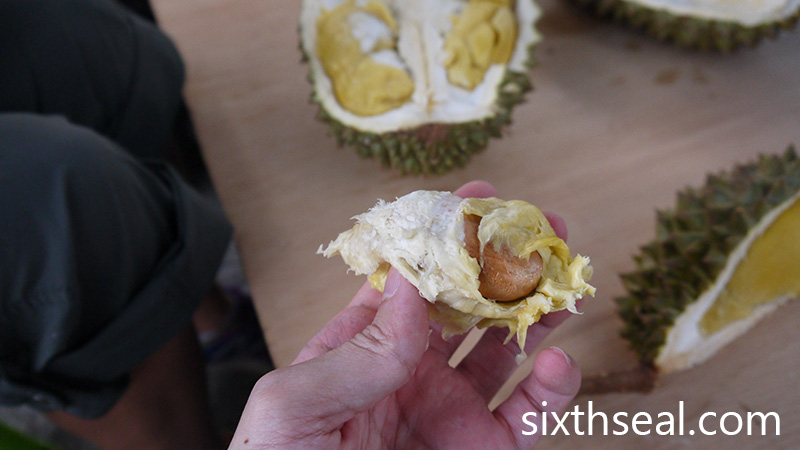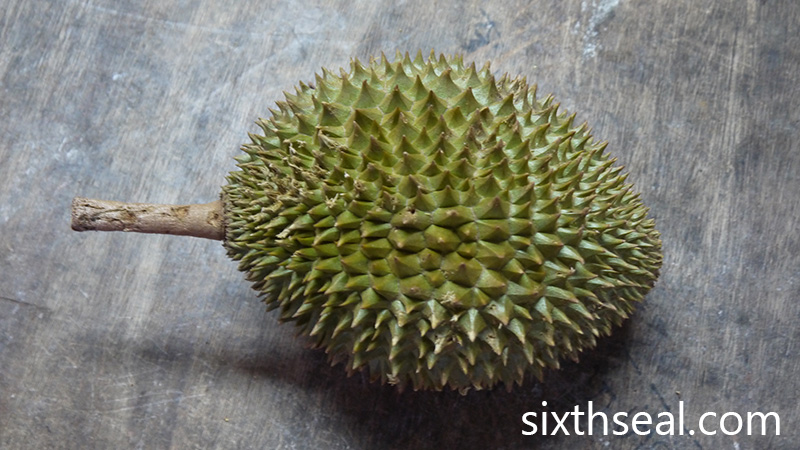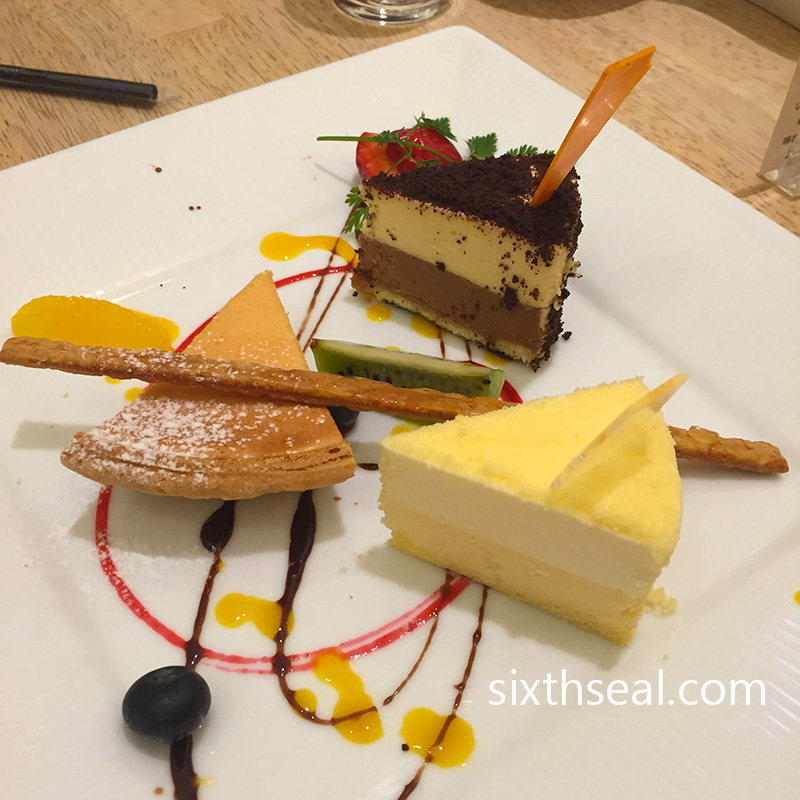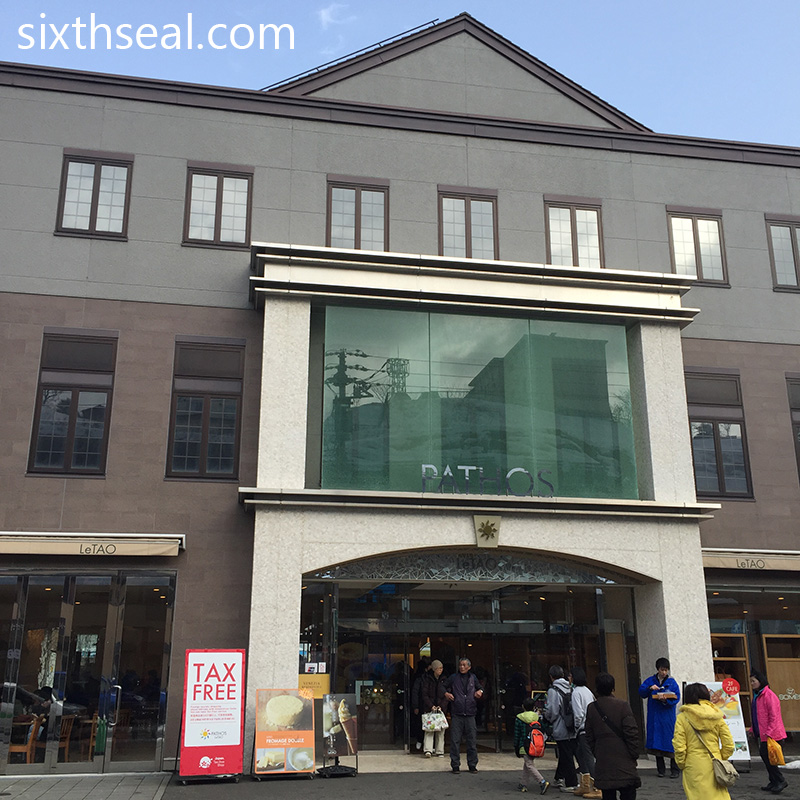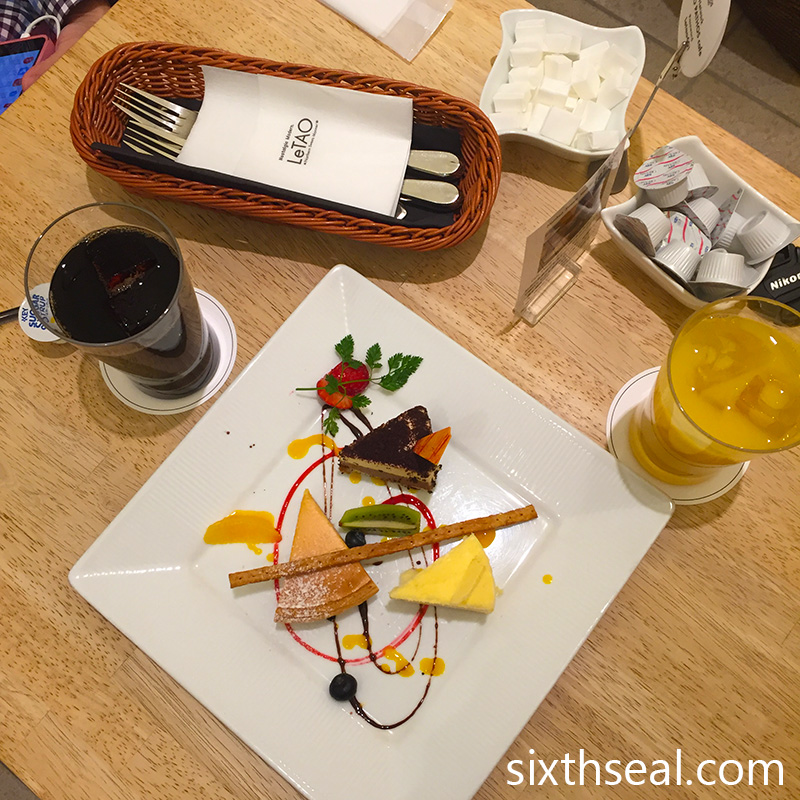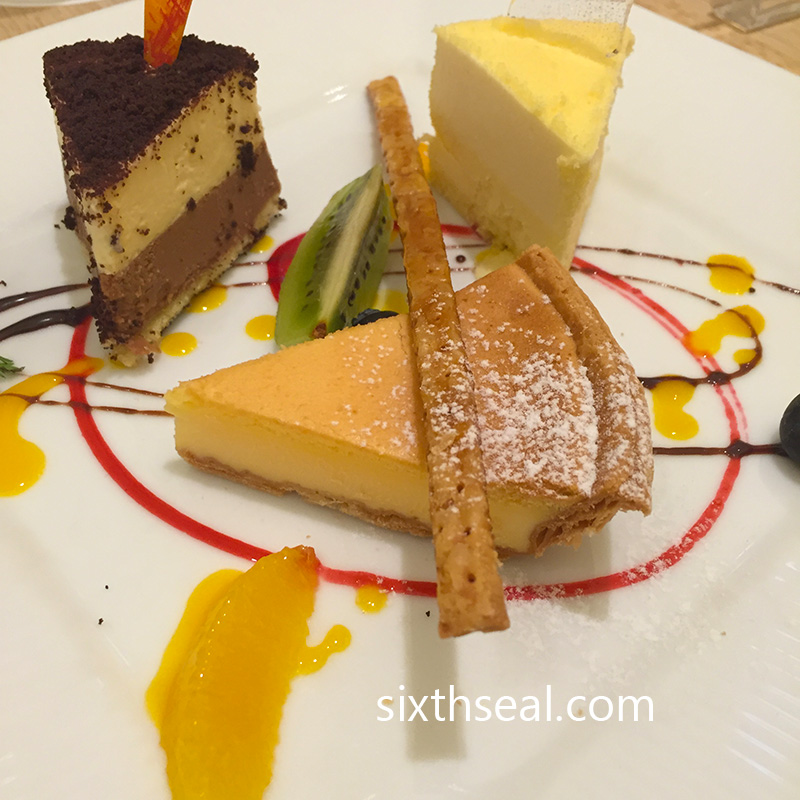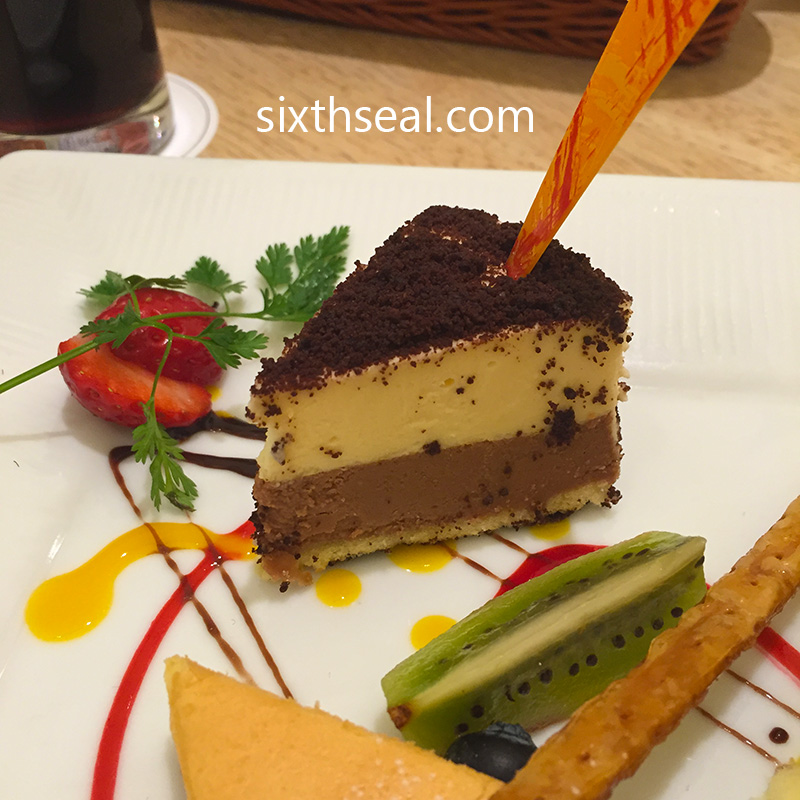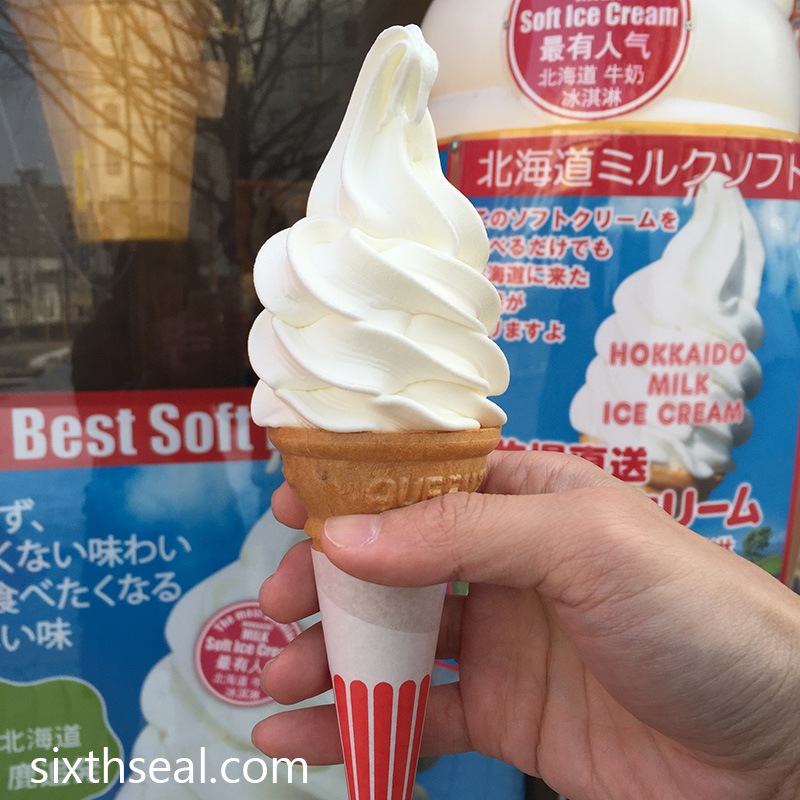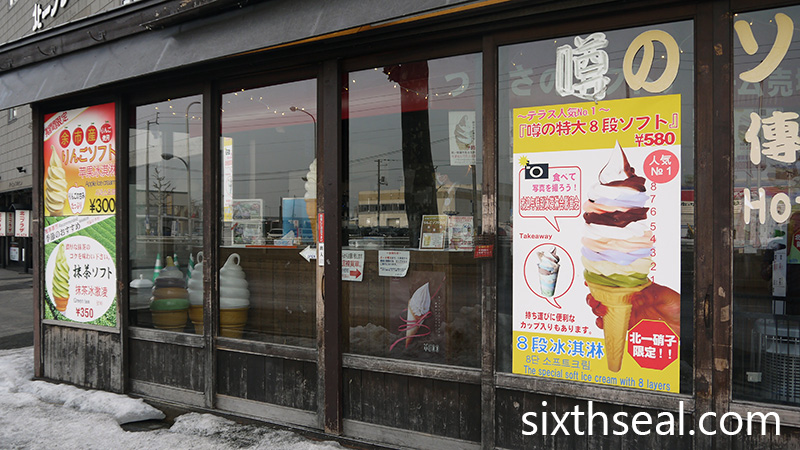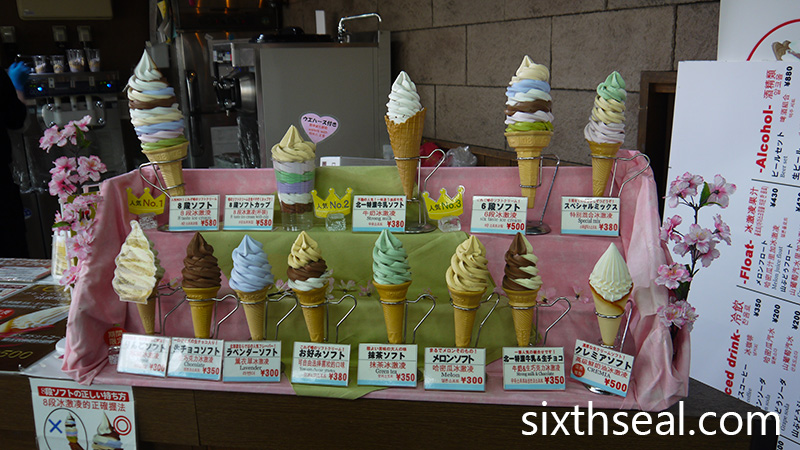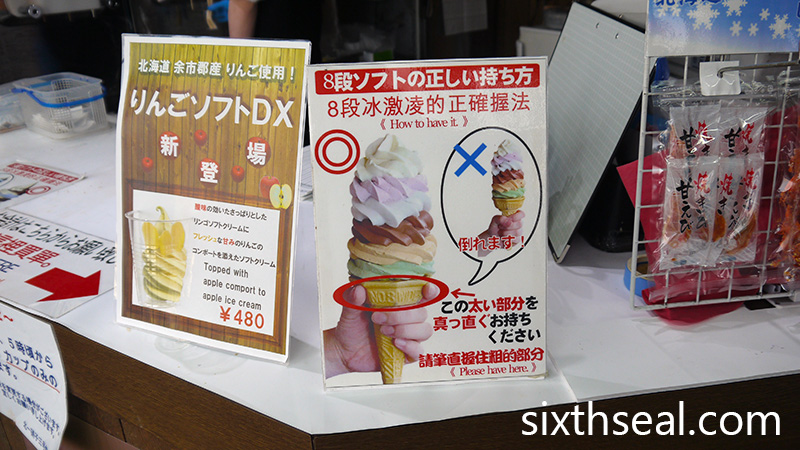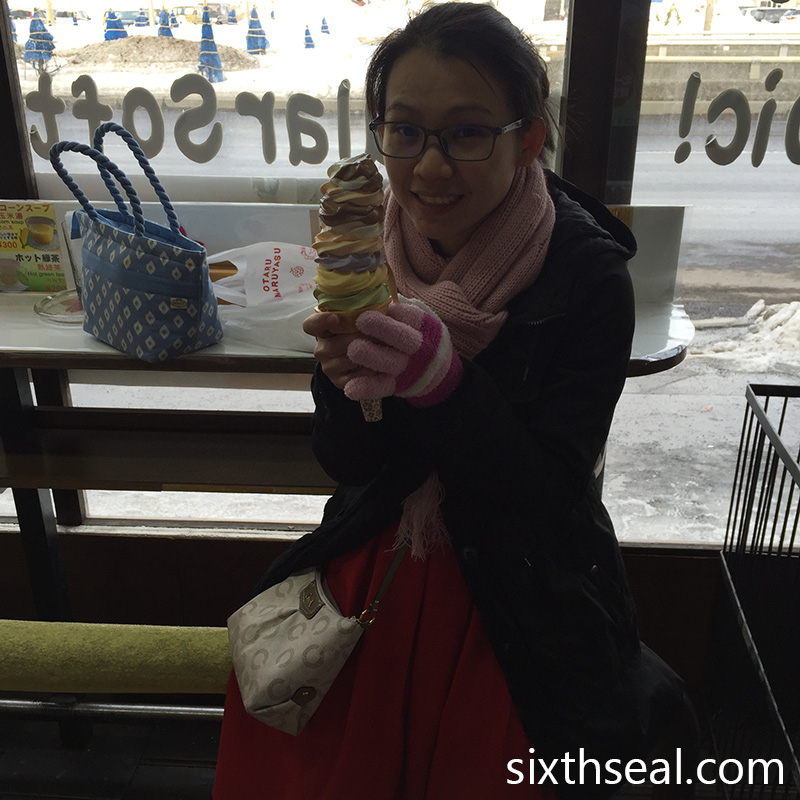
Ekiben (駅弁) is a special type of bento which is only available at long-distance train stations like the famous Shinkansen (bullet train). It’s a bento that’s meant to be eaten on the train while traveling and it features local delicacies in the area you’re at. It’s not just a bento, but a really cool Japanese boxed lunch with different local specialties. I really wanted to eat one during our trip to Otaru so I told my better half to save some stomach space for it.
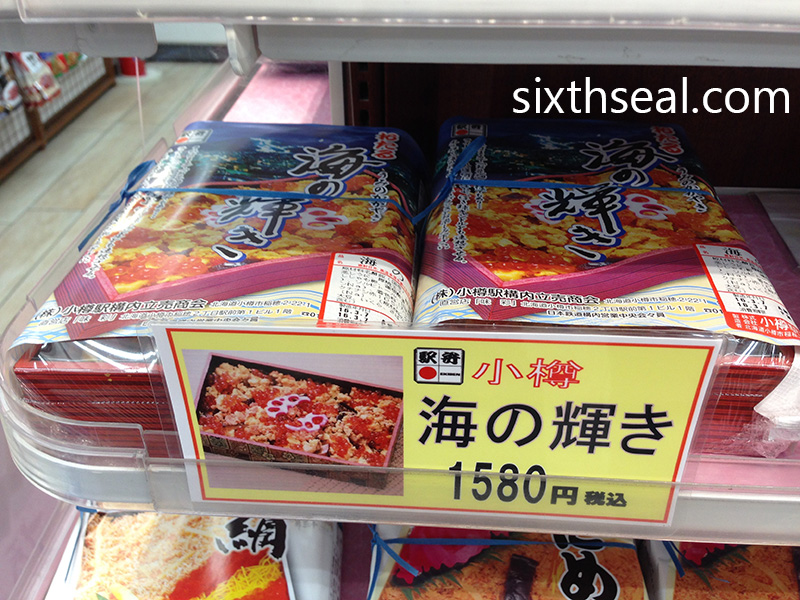
This is the selection we saw at JR Otaru station. You’ll usually find the ekiben at a specialty shop only selling ekiben or a konbini/department store closest to the train entrance. There will always be one “featured” ekiben – this is the bento that is most representative of the region you’re currently in. Otaru is well known for its fresh seafood (especially uni) and the flagship ekiben is a beautiful uni and ikura ekiben.
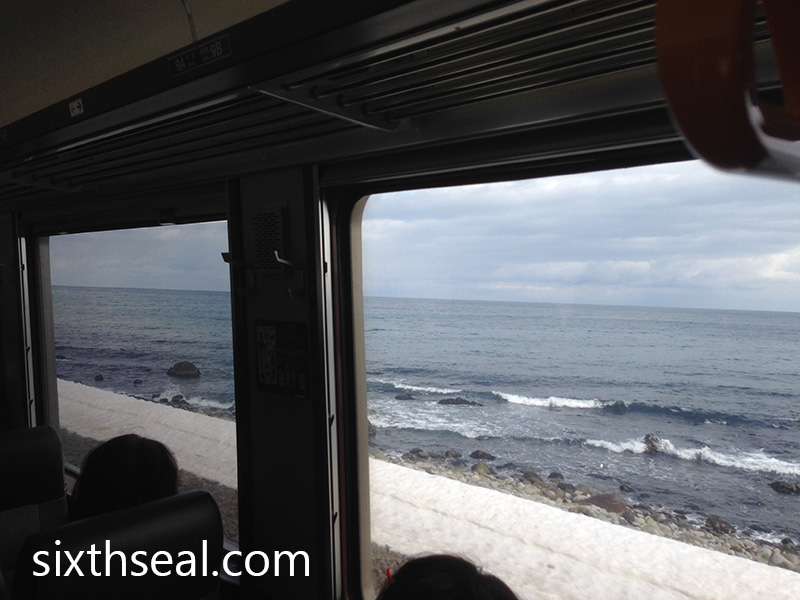
The ekiben boxes are really nice lacquer boxes too. Some of them can even be reheated instantly using the same technology in military MREs (Meal, Ready-to-eat). There were a wide variety in a refrigerated corner of the shop and my dear wondered if anyone actually bought them. Well, her question was answered when we were about to go back to Sapporo – there were only a few ekiben left! I picked up the featured ekiben while she chose one that caught her eye to eat on the train.

This is my ekiben. It’s the signature ekiben of Otaru, grandly named 海 の 輝き or “Sparkle of the Sea“. This 1,580 JPY (about RM 65) bento totally deserved the hyperbolic designation though. It was the most delicious bento I’ve ever had in my life! I’m a little embarrassed to say that it was actually one of the best things I’ve eaten in Hokkaido. Haha!

It’s filled to the brim with uni (sea urchin), ikura (salmon roe), Shiitake mushrooms, flying fish roe and Japanese rolled egg. I used chopsticks to grab a mouthful and was surprised to taste just how well the creamy uni goes with the popping, salty ikura. The savory umami mushroom slices and crunchy flying fish roe is offset by the sweet Japanese egg and blends the multitude textures and flavors together into one orgasmic experience.

I hesitantly said “Dear, do you want some?” hoping she’ll say no. I’m kidding (or am I? ![]() ). I’m always happy to share with my better half. I cleaned every single morsel from the wappameshi (わっぱ飯 – thin, bent wooden box) and regretted not getting two.
). I’m always happy to share with my better half. I cleaned every single morsel from the wappameshi (わっぱ飯 – thin, bent wooden box) and regretted not getting two.

My dear went for the 1,080 JPY (around RM 45) Otaru oyster ekiben. I had just eaten Otaru oysters at the 1 Michelin Isezushi and I loved the freshness of their local oysters. This was a full complement of five (5) pieces of oysters on top of a bed of rice with some tsukemono (pickles) on the side. The juicy oysters were really flavorful – all the braising liquid seeped into the oysters so they pack a flavorful punch!
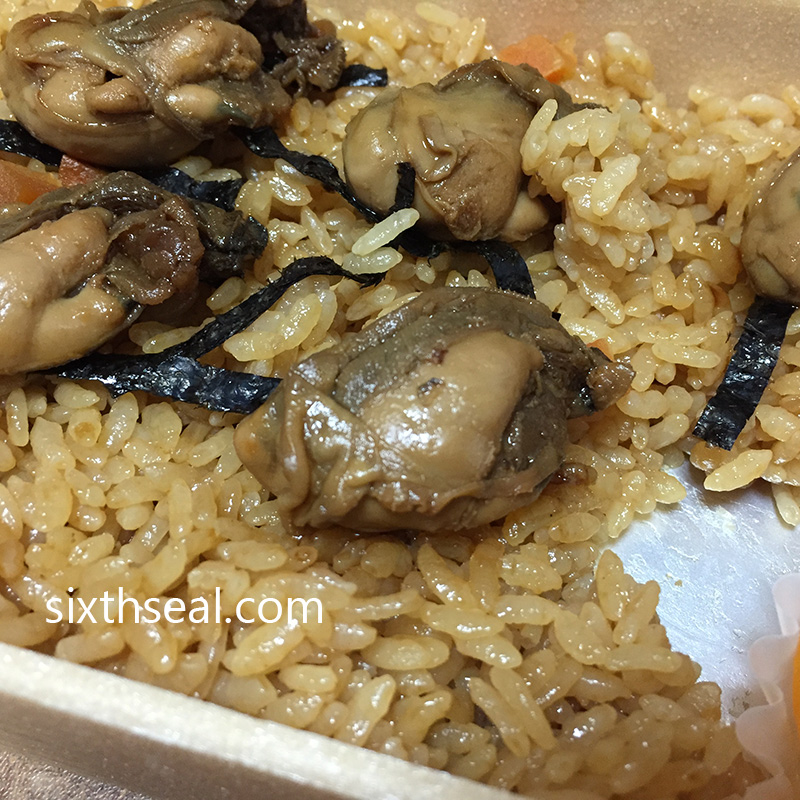
The best part about her ekiben is the rice. The rice has been cooked with Shiitake mushrooms, scallops and oysters and resulted in a beautiful golden brown that tasted wonderful! It’s really very good.
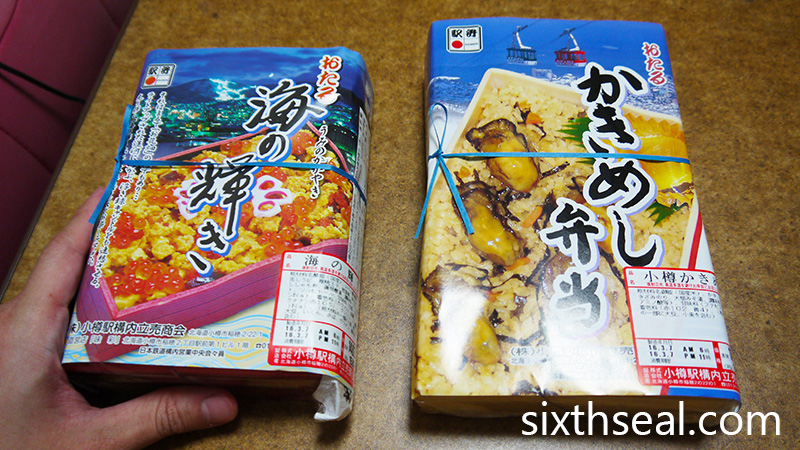
You won’t find ekiben at train stations with only regional commuter lines or subway lines. Ekiben are only sold at stations with long-distance trains going in and out. I really enjoy this cultural quirk of Japan and I hope to try more ekiben when we go back next year. There are so many special ones like Yamagata domannaka featuring local beef to Ibaraki raised Rose Pork ekibens. I’m really looking forward to eating one while traveling by Shinkansen in Japan again.


























